|
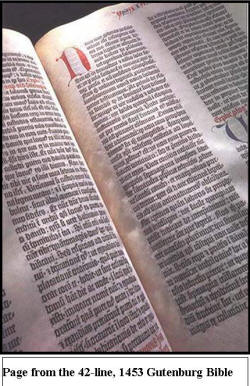 For many the question on how was the Bible written is a mystery. Even if
someone agrees on the inspiration of the Bible, for many the
mystery remains on how the Bible became the Bible? If God
revealed His words to Moses, how did those words get from Moses
to us today? The question easily extends itself to all 40
writers of the 66 books, which make up the Bible. What was the
language was the Bible written in? What was it written on?
These questions among others face the student of Bible origins.
Critics who attack the Bible play on the lack of historical and
archeological knowledge to level their charges. For many the question on how was the Bible written is a mystery. Even if
someone agrees on the inspiration of the Bible, for many the
mystery remains on how the Bible became the Bible? If God
revealed His words to Moses, how did those words get from Moses
to us today? The question easily extends itself to all 40
writers of the 66 books, which make up the Bible. What was the
language was the Bible written in? What was it written on?
These questions among others face the student of Bible origins.
Critics who attack the Bible play on the lack of historical and
archeological knowledge to level their charges.
Critics ask the question, how did the Bible become the Bible? Charging
the Bible was the result of “Oral transmission”, claiming,
writing did not exist in the days of Abraham and Moses.
Therefore, the Bible was written down after long periods, its
words are not reliable. In fact, they theorize the Bible is a
collection of near-east mythology.
Was the Bible transmitted
orally?
Before we understand this question, we need to understand Oral
Transmission. Oral transmission (tradition) is the process
of verbal transmission as opposed to written transmission. Oral
transmission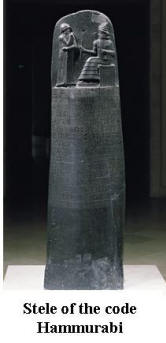 relies on the ability of the previous generation,
to pass on the stories, traditions and history verbally, from
one generation to the next. relies on the ability of the previous generation,
to pass on the stories, traditions and history verbally, from
one generation to the next.
One of the most well known bible critics is Julius
Wellhausen (1844-1918). Wellhausen is a German biblical
scholar who put forward the Documentary Hypothesis theory
concerning the Bible. His theory was based on the idea, that
the Bible, specifically the Torah (5-books of Moses,) was not
authored by Moses but by different authors via oral tradition.
He identified these strands (authors) as J-E-D-P,
each letter representing a different source of authorship,
according to Wellhausen the different strands were collected and
put together in the Torah, at a later period. His theory
dismisses the authorship of Moses, branding the Torah as a
fabrication.
Wellhausen based his theory on the idea that writing
did not appear amongst the Hebrews until many years after
Moses. R.K. Harrison, rejects the basis of the Wellhausen
theory, writing,
“Contrary to the
contentions of Wellhausen, who maintained, against
archaeological evidence already available in his day, that
writing did not appear among the Hebrews until the early
monarchy; they had the means of producing written records at
their disposal from very early times”
Hebrew is a Semitic language, and Abraham was from the city of Ur, which
was a very literate culture even during the times of Abraham.
From the region of Babylon, one of the most famous written
documents preserved in stone is the Code of Hammurabi
(1792-1750 B.C.), who lived within 250 years of the life of
Abraham. On the stele,
the laws of ancient Babylon were recorded for generations to
come. Hammurabi, also lived 300-years before the time of
Moses. So Wellhausen contention of Hebrews not being able to
write down the events in their past is not founded on fact, but
is completely without merit.
In addition to the Code of Hammurabi, there are many proofs of the
“Literate” culture, which both Abraham and Moses existed.
Moses who is credited with writing the Torah (Five books of Moses;
Genesis, Exodus, Leviticus, Numbers and Deuteronomy) was
educated in the house of Pharaoh, he would have been literate
not only in Egyptian but the surrounding cultures in his day. In
the book of Job, dated to the Patriarchal period
(2100-1800 B.C.) before the time of Moses, Job refers to writing
and the material on which one writes. Writing with an Iron pen
upon stone and lead is clearly described; lead a soft material
could be inscribed with an Iron stylus. Soft Clay was also a
material used to write upon, preserving the words of the
writer.
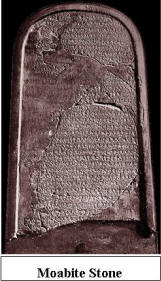 23 "Oh, that my words were written! Oh, that they were inscribed in a
book! 24 That they were engraved on a rock With an iron pen and
lead, forever! Job 19:23-24 23 "Oh, that my words were written! Oh, that they were inscribed in a
book! 24 That they were engraved on a rock With an iron pen and
lead, forever! Job 19:23-24
Other documents exist clearly documenting the existence of writing in the
time of Moses, and the invasion of the Hebrews into the land of
Canaan. These documents are the Letters from the Tell El-Amarna.
A peasant woman digging in the dirt discovered these letters
in 1887. The letters were written in Akkadian (Babylonian)
script with some Canaanite glosses. These letters dated to the
conquest of Joshua, mention the invasion of Habiru (Hebrews).
Also Confirming the written language outside of the Bible is the Moabite
stone
(Mesha Stele), which is dated to the time of King Mesha
of Moab. He was a contemporary of Jehoshaphat, king of
Judah (870-848 BC), and Joram, king of the northern
kingdom of Israel (852-841 BC). The Moabite Stone gives King
Mesha’s point of view of the events of 2 Kings 3. The alphabet
and the language on the stone were both Moabite, which a
language closely related to Hebrew. Encyclopedia Britannica says
the following on the Moabite Language
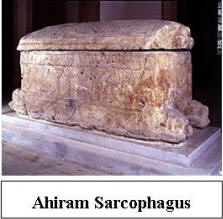 “Eastern subdivision of the Canaanite branch of the early Semitic
alphabet, closely related to the early Hebrew alphabet. The
best-known example of the Moabite alphabet is from the Meshaʿ,
or Moabite, Stone (Louvre, Paris), which was discovered in 1868
at Dibon, east of the Dead Sea. The stone bears a 34-line
inscription of Meshaʿ, king of Moab, dating from the middle of
the 9th century BC. Until the discovery of the Aḥiram inscription in 1923 at Byblos, the Meshaʿ Stone was
considered the earliest extant alphabetic inscription. “Eastern subdivision of the Canaanite branch of the early Semitic
alphabet, closely related to the early Hebrew alphabet. The
best-known example of the Moabite alphabet is from the Meshaʿ,
or Moabite, Stone (Louvre, Paris), which was discovered in 1868
at Dibon, east of the Dead Sea. The stone bears a 34-line
inscription of Meshaʿ, king of Moab, dating from the middle of
the 9th century BC. Until the discovery of the Aḥiram inscription in 1923 at Byblos, the Meshaʿ Stone was
considered the earliest extant alphabetic inscription.
The Moabite stone is incontrovertible evidence of a rich Hebrew language
and culture, which corresponds to the Moabite civilization, the
Moabites were a subject nation to Israel, during the time of
Mesha. Even older then the Moabite stone by almost 400 years,
is the inscription on the sarcophagus of Ahiram king of Byblos
(1250 B.C), which is the earliest “known” writing of the
Phoenician alphabet.
The existence of written language and communication during the time of
Abraham (2100 B.C.) and Moses (1450 B.C.) is demonstrated by
both history and archaeology. There is no need for oral
transmission of scripture when the written language was so
pervasive. The books of Moses lay claim to a written
transmission of the Torah. The king of Israel was to write a
copy of the Law (Torah), and read from his copy.
18 "Also it
shall be, when he sits on the throne of his kingdom, that he
shall write for himself a copy of this law in a book, from the
one before the priests, the Levites. 19 "And it shall be with
him, and he shall read it all the days of his life, that he may
learn to fear the Lord his God and be careful to observe all the
words of this law and these statutes,
Deuteronomy 17:18-19 (1450 B.C.)
Literacy was both expected and common in the culture of the Exodus,
contrary to the critics of the Bible.
The development
of Alphabets
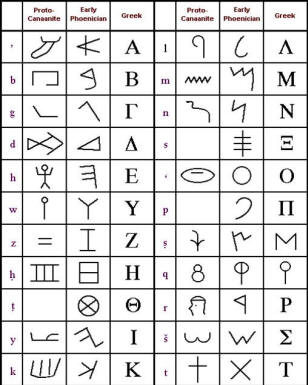 Archeology has clearly demonstrated the existence of a written alphabetic
communication dating to the time of Abraham, and an even earlier
cuneiform methods. There are several theories about the
development of alphabets. An interesting point to note, the
early Hebrew Alphabet is nearly identical with the
Phoenician Alphabet, which is dated as early as the time of
Joseph. Greeks writers have even proposed the Hebrews as the
inventors of the alphabet. Quoting Encyclopedia Britannica, Archeology has clearly demonstrated the existence of a written alphabetic
communication dating to the time of Abraham, and an even earlier
cuneiform methods. There are several theories about the
development of alphabets. An interesting point to note, the
early Hebrew Alphabet is nearly identical with the
Phoenician Alphabet, which is dated as early as the time of
Joseph. Greeks writers have even proposed the Hebrews as the
inventors of the alphabet. Quoting Encyclopedia Britannica,
Over the centuries, various theories have been advanced to explain the
origin of alphabetic writing, and, since classical times, the
problem has been a matter of serious study. The Greeks and
Romans considered five different peoples as the possible
inventors of the alphabet—the Phoenicians, Egyptians, Assyrians,
Cretans, and Hebrews. Among modern theories are some that are
not very different from those of ancient days. Every country
situated in or more or less near the eastern Mediterranean has
been singled out for the honor.
The early Hebrew alphabet, the Paleo-Hebrew alphabet could have
been the source behind the Phoenician alphabet; since many agree
that the Proto-Canaanite alphabet preceded the Phoenician, which
was the source behind the Greek alphabet which is the source
behind the alphabets in the Western world. Encyclopedia
Britannica continues regarding Hebrew as the origin of today’s
alphabets.
The inventor or inventors of the alphabet were, no doubt, influenced by
Egyptian writing—perhaps also by other scripts. Indeed, it is
probable that those who invented the alphabet were acquainted
with most of the scripts current in the eastern Mediterranean
lands at the time. Though the nationality of the inventor or
inventors of the alphabet is unknown, it is now generally agreed
that he or they belonged to the Northwest Semitic linguistic
group, which includes the ancient Canaanites, Phoenicians, and
Hebrews………Originally, graphs were perhaps “motivated” pictorial
signs that were subsequently used to represent the initial sound
of the name of the pictured object. The North Semitic alphabet
remained almost unaltered for many centuries. If the signs'
external form (which, it must be emphasized, had no particular
significance) is ignored and only their phonetic value, number,
and order are considered, the modern Hebrew alphabet may be
regarded as a continuation of the original alphabet created more
than 3,500 years ago. The Hebrew order of the letters seems to
be the oldest. The earliest evidence that the Hebrew alphabet
was learned systematically was left in the form of a schoolboy's
scribbling on the vertical face of the upper step of a staircase
leading up to the palace at Tel Lakhish, in southern Israel. It
includes the scratching of the first five letters of the early
Hebrew alphabet in their conventional order, and it belongs to
the 8th or 7th century BC.
The Biblical
languages
The history behind the development of alphabets formed the basis and
history of how the Bible would be written from the time of Moses
to the New Testament. The Bible was composed in a very literal
environment, with well-developed literal methods of recording,
thoughts, history and communication. Using this literal
environment, God revealed Himself to the Hebrew prophets who
recorded His messages not only to the Hebrew nation, but to the
world around them. Many people would be able to read the
Paleo-Hebrew writing, and understand the Semitic language of the
Hebrews.
The Bible in the original is written in three languages, Hebrew, Aramaic
and Greek. Hebrew and Aramaic are both related languages, being
Semitic in nature. After the conquest of Alexander the Great (c.
332 B.C), Greek became the lingua franca
of the Mediterranean. Today all three of these languages are
still living and existing languages. In fact, the recent movie
by Mel Gibson, the Passion was in the Aramaic tongue, the
language of Babylon.
Hebrew
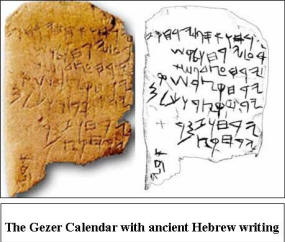 1450-516 B.C. 1450-516 B.C.
From the time of the Exodus, Moses in all likelihood recorded the Torah,
in the Paleo-Hebrew script; this script was nearly identical
with the Early Phoenician script. This same script was used
throughout the land of Canaan as recorded by Isaiah in 19:18.
This was the main script used until the time of the exile. It is
at this point the armies of Babylon (586 B.C.), destroyed the
city of Jerusalem and the Temple, taking the survivors into
Babylon for seventy-years. The hostages during this period
would include the Daniel and Ezekiel. (Daniel 1, Ezekiel 1:1).
539 B.C. to A.D. 500
In 539 B.C., the armies of Cyrus the Great, king of Persia, defeat
Babylon, he allows the Jews to return and rebuild of the Temple
to begin. This is the beginning of the Second Temple Period.
After Seventy-years of captivity, many of the descendents of the
Jewish captives had forgotten the Hebrew tongue and alphabet.
The Aramaic alphabet was adopted for the Hebrew language, this
helped the Jews make the transition, to still be a distinct
people and yet being able to communicate with the society around
them. Manuscripts of the Torah and Prophets were written in the
Aramaic square script (Current Hebrew) rather then the
earlier Paleo-Hebrew script (Ancient Hebrew). Nehemiah
records the problems facing the restored Hebrew nation in 440
B.C.
23 In those days I also saw Jews who had married women of Ashdod, Ammon,
and Moab. 24 And half of their children spoke the language of
Ashdod, and could not speak the language of Judah, but spoke
according to the language of one or the other people.
Nehemiah 13:23-24
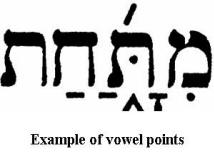 The use of Babylonian (Aramaic) square script would become the dominate
form of Hebrew in the Biblical manuscript for the future.
Although, there were Paleo-Hebrew manuscripts found at the Dead
Sea and Bar Kochba
introduced them on the coins, the square script remains until
this day the current letters used for Hebrew. The use of Babylonian (Aramaic) square script would become the dominate
form of Hebrew in the Biblical manuscript for the future.
Although, there were Paleo-Hebrew manuscripts found at the Dead
Sea and Bar Kochba
introduced them on the coins, the square script remains until
this day the current letters used for Hebrew.
500 to 1000
A.D. Masorites
Around A.D. 500, a group of Jewish scribes, based in the Galilee, the
Masorites, helped preserve the Hebrew text from the sixth to the
10th century A.D. They added vowel points to the
Hebrew manuscript to ensure proper pronunciation. Earlier
manuscripts had no vowel points, since most were familiar with
the Hebrew words.
The Hebrew manuscripts produced by the Masorites form the basis of
current Old Testament translations. These manuscripts are known
as the Masoretic Text.
Aramaic
The second language in the Old Testament is Aramaic, named after the
Arameans, the people of Aram. Arameans spoke a Semitic language
closely related to Hebrew, Syriac and Phoenician, with an
alphabet derived from the Phoenician manuscript. Abraham is
described as an Aramean, his wife Sarah and her relatives
settled in the land of the Arameans (Syria) (Deut. 26:5,
Genesis 25:20)
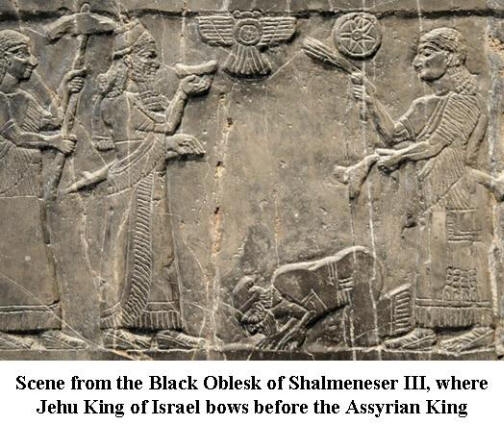 The Arameans established city-states throughout Syria; one of the oldest
Aramean settlements is Damascus, a constant threat to Israel.
David defeated Damascus, the leading city of Aram (Syria) (2
Samuel 8:3-5), establishing the Hebrew in the area. The
Assyrians under Shalmeneser III 841 B.C headed west
subduing the Arameans, displacing them from their lands and
relocating populations. This process continued until
Babylonians defeated the Assyrians in 609 B.C. The northern
kingdom, Israel, removed and transplanted to the East, like many
of the Aramean city-states, in 722 B.C. This was the Assyrian
policy in conquered territory to subdue populations they moved
people. The Arameans established city-states throughout Syria; one of the oldest
Aramean settlements is Damascus, a constant threat to Israel.
David defeated Damascus, the leading city of Aram (Syria) (2
Samuel 8:3-5), establishing the Hebrew in the area. The
Assyrians under Shalmeneser III 841 B.C headed west
subduing the Arameans, displacing them from their lands and
relocating populations. This process continued until
Babylonians defeated the Assyrians in 609 B.C. The northern
kingdom, Israel, removed and transplanted to the East, like many
of the Aramean city-states, in 722 B.C. This was the Assyrian
policy in conquered territory to subdue populations they moved
people.
The displaced Arameans throughout Assyria caused Aramaic to become the
language of common use, throughout the Assyrian kingdom.
Educated Hebrews would be familiar with both Hebrew and Aramaic
in the time of Hezekiah (785-686 B.C.). When the Assyrian army
surrounds Jerusalem, the leaders in Jerusalem urge the Assyrians
to communicate in Aramaic, so the common people do not
understand (Isaiah 36:11). Aramaic eventually became the common
language of the Babylonian and Persian kingdom.
In 586 B.C., the Babylonians destroyed Jerusalem and took the surviving
Jews into exile; During the exile in Babylon the Jews acquired
Aramaic as their common language. Daniel chapter 2:4 to 7:28,
Ezra 4:8-6:18, 7:12-26 are written in
Aramaic.
After the Jews return from the exile, the Aramaic square script
replaced the Paleo-Hebrew script used before the exile.
Even after the conquest of Alexander the Great, and the spread
of the Greek Language, Aramaic was still the common language in
Palestine.
Jesus is quoted in Aramaic demonstrating the pervasive nature of Aramaic
in the first century. In Aramaic, Jesus is quoted as saying,
talitha koum “Little girl arise”[Mark 5:41]; ephphatha “be
opened” [Mark 7;34]; Eloi, Eloi, lama sabachthani, “My
God, My God why have you forsaken me?”[Mark 15;34].
Jews would maintain Aramaic-speaking communities many years after the
Temple is destroyed in A.D. 70. Targums, the Aramaic
word for translation became known as paraphrases of the
Old Testament, they were read along with the Hebrew to help
Aramaic speaking Jews understand the scripture.
Greek
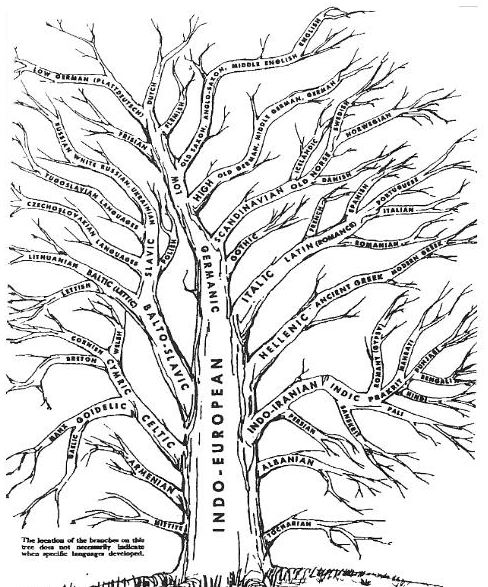 In 334 B.C., the armies of Alexander the Great crossed the Dardanelles,
with 30,000-foot solders and 5000 horsemen. Within the next
10-years, the Persian Empire would completely fall to the armies
of Greece. In 323 B.C., Alexander the Great died in Babylon at
the age of 33. His kingdom was divided between his generals.
As a result, Greek became the common language in the
Mediterranean world, and former Persian Kingdom. In 163 B.C.,
the Jews were able to reestablish a Jewish Kingdom for about
100-years until Rome arrived. In 334 B.C., the armies of Alexander the Great crossed the Dardanelles,
with 30,000-foot solders and 5000 horsemen. Within the next
10-years, the Persian Empire would completely fall to the armies
of Greece. In 323 B.C., Alexander the Great died in Babylon at
the age of 33. His kingdom was divided between his generals.
As a result, Greek became the common language in the
Mediterranean world, and former Persian Kingdom. In 163 B.C.,
the Jews were able to reestablish a Jewish Kingdom for about
100-years until Rome arrived.
After the region of Palestine fell (the Maccabean Kingdom) to the Romans
in 63 B.C., under the general Pompeii, Greek remained the
language of trade and commerce in the Roman world. Greek was
the language of communication through the East and Europe.
Latin was still a western language, foreign to the people of the
East. Greek became the common spoken language in the east and
west, thanks to Alexander and his kingdom. The Greek language
allowed the New Testament to spread, in the Roman and Greek
speaking cities and throughout Asia, Europe and Africa.
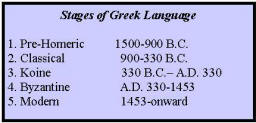 According to Paul D. Wegner, both the language and alphabet of the Greeks
are related to the Phoenicians. According to Paul D. Wegner, both the language and alphabet of the Greeks
are related to the Phoenicians.
Most scholars believe that the Greek alphabet was derived from the
Phoenician alphabet, with at least five letters showing direct
resemblance. The following evidence suggests that these two
languages are related.
1. Nearly all the early Greek letters reflect a Semitic origin.
2. Phonetic values of the majority of early Greek letters are the same as
Semitic values and their order is very similar.
3. Until about 500 B.C., Greek was written from right to left, similar to
the Semitic languages.
4. Most Greek letter names are meaningless in Greek but mean something in
Semitic languages. For example, alpha an beta are
simply letter names in Greek but are almost identical to the
names of the first two letters of the Hebrew alphabet, alep
and bet, which can also denote objects represented by
their shapes, namely, ox and house respectively. 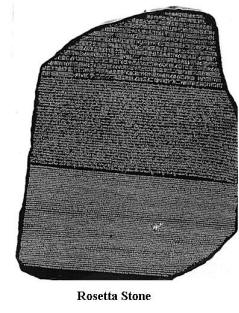
There are five stages to the history of the Greek language. Homer, who
wrote the Illiad and Odyssey during the classical
age, used classical Greek. Koine (common) Greek was used
to write the New Testament and Septuagint. The
Septuagint, the Greek translation of the Old Testament, was
written between 250-100 B.C. and is used in eighty-percent of
the Old Testament quotes in the New Testament. According to F.F.
Bruce, the Greek of the Septuagint, has Greek words but Hebrew
idiom.
From
Inspiration to Manuscript
Writing
Materials
The way writing was transmitted varied in the ancient world, the oldest
surviving materials were written on stone and metal. While
manuscripts written on paper and leather only survived if kept,
dry to prevent rot, such as the Dead Sea scrolls and Egyptian
Papyri. The greatest numbers of ancient manuscripts surviving
were written on stone and clay.
Stone
The Bible records stone being the preferred method, since the Lord choose
stone. The 10-commandments written by the finger of God were
written on stone (Exod. 24:12; 31:18; 32;15-19). Job refers to
his words being inscribed on stone and lead using an iron pen
(Job 19:24). Stone however was not practical for everyday use.
The Code of Hammurabi written on black basalt (volcanic stone) has
been preserved for more then 3700-years, because it was written
on stone. The code written during the time Israel was captive
in Egypt, lists many laws with a similar nature to the Mosaic
covenant, such as marital faithfulness. The code was stolen
600-year later, by the Elamites, who moved it to Suza (Persia)
where it was discovered.
The Rosetta Stone another import discovery, also written on
basalt, helped to crack the code of Egyptian hieroglyphics.
Found in 1799, the stone had the same inscription of a decree
written in 3-languages Hieroglyphics (Egyptian
pictographs), Demotic (Cursive Egyptian derived from
hieroglyphics) and Greek.
Clay Tablets
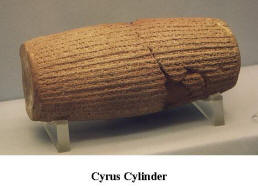 Huge numbers of clay tablets have been found verifying many of the
events, names and cities found in the Bible. Wagner lists the
number of tablets found at various locations. Huge numbers of clay tablets have been found verifying many of the
events, names and cities found in the Bible. Wagner lists the
number of tablets found at various locations.
“Ten thousand at Bogazkoy [Turkey], the Hittite capital; twenty thousand
at Nuzi [Iraq]; twenty thousand at Ugarit [Syria] and sixteen
thousand at Ebla [Syria]”
Among the most famous clay tablets found is the Cyrus Cylinder
dated to about 539 B.C., verifying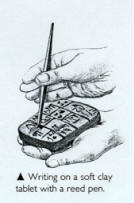 many of the events in the
Bible, which correspond the Persian victory over Babylon.Clay
was cheap and durable but the amount of information was limited
and transportation was difficult due to the weight of the
document. A three-edged stylus was used with soft clay. The
clay was then fired or dried preserving the words. many of the events in the
Bible, which correspond the Persian victory over Babylon.Clay
was cheap and durable but the amount of information was limited
and transportation was difficult due to the weight of the
document. A three-edged stylus was used with soft clay. The
clay was then fired or dried preserving the words.
Papyrus
Papyrus is a plant in the swamps along the Nile River. From Papyrus, we
get the word “Paper”. The pith (inside part) of the plant was
cut into strips and laid in horizontal and vertical layers,
allowing the natural sugars of the plant to bond the strips
together. Papyrus was used for writing from the earliest
periods. According to Herodotus (484-430 B.C.), Papyrus was
such a common material, he could not think of a civilized people
using anything else (Herodotus Historia 5.58).
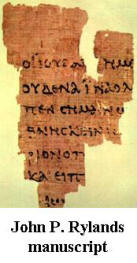 Papyrus was much easier to use then clay and stone, and could be easily
transported, but it was not as durable as clay, and the source
for it was limited to Egypt. Many of the Papyrus documents
found, only survived, because they were kept in dry
environments, like the Sinai desert or the Dead Sea area, where
the scrolls were not exposed to moisture. Papyrus was much easier to use then clay and stone, and could be easily
transported, but it was not as durable as clay, and the source
for it was limited to Egypt. Many of the Papyrus documents
found, only survived, because they were kept in dry
environments, like the Sinai desert or the Dead Sea area, where
the scrolls were not exposed to moisture.
One of the
oldest New Testament Papyrus manuscripts is the John Rylands
manuscript dated to 125 A.D., containing a portion of
John 18:31-33.
Leather
Leather was acquired from sheep, goat, antelope or cowhides; it was
dried, shaved and scraped clean for writing. Leather had a
greater durability then paper, but still succumbed to the
environmental elements. In time like paper, leather dries,
cracks and crumbles. From ancient times, leather was used as a
writing material. Wagner quoting F.G. Kenyon writes, 
In Egypt there are references to documents written on skins in the time
of the IV Dynasty (c.2900-2750 B.C.), and the actual specimens
are extant from the XII Dynasty (c. 2000-1788 B.C.). Ctesias,
the Greek historian [of Persia], refers to the royal chronicles
being written on leather, by the ancient Persians, but does not
specify their precise dates. They may include those to which
reference is made in Ezra vi. 1,2 and Esther vi. 1. Herodotus
records that once, when papyrus was scarce, the Ionian Greeks
used sheep skins and goatskins in its place; and he ads that any
of the “barbarians’ still did so in his day…More important for
our present purpose is the traditional use of leather for the
books of the Law in Hebrew. In the Talmud it is laid down that
all copies of the Law used in public worship ust be written on
skins of clean animals, and in roll-form.
One of the most important scrolls found at the Dead Sea, the Isaiah
scroll is made of leather. According to the Letter of
Aristeas (second century B.C.) the scrolls, which the
translators of the Septuagint used were also made of leather.
Parchment
Parchment is also made of the hides of animals; however, they are soaked
in limewater to make them white. Younger hides gives a finer
quality of material, some hides used were those of yet unborn
calfs. Parchment was smooth, and the white color and produced
a very clear product.
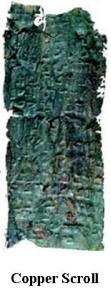 The city of Pergamum in Asia Minor, one of the seven-churches in
Revelation, was one of the centers of Parchment production. The
name parchment is derived from the city. Use of parchment was
widespread in the 2nd century B.C., and became the
preferred writing material for scriptures. The city of Pergamum in Asia Minor, one of the seven-churches in
Revelation, was one of the centers of Parchment production. The
name parchment is derived from the city. Use of parchment was
widespread in the 2nd century B.C., and became the
preferred writing material for scriptures.
Metal
One of the most famous Dead Sea Scrolls is the famed Copper Scroll, which
is a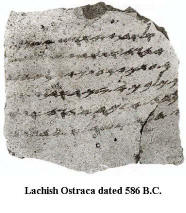 list of the Temple treasures and their locations. list of the Temple treasures and their locations.
Potsherds (Ostraca)
Pieces of pottery were used to jot notes on, the material preserved
messages thousands of years old. One of the most famous is the
Lachish Ostraca, which records events taking place in the city
during the Babylonian siege in 586 B.C.
|
The Silver Amulets
 In 1979 two small rolled pieces of silver were discovered
in a burial cave in Jerusalem, Israel. When the
little scrolls were carefully unrolled, researchers
found words from the Book of Numbers inscribed into
the silver, written in characters from an ancient
Hebrew script. In 1979 two small rolled pieces of silver were discovered
in a burial cave in Jerusalem, Israel. When the
little scrolls were carefully unrolled, researchers
found words from the Book of Numbers inscribed into
the silver, written in characters from an ancient
Hebrew script.
The scrolls contain the text of the Priestly Benediction,
which appears in Chapter 6 of Numbers, and which is
still recited today by Jews in synagogue prayer
throughout the world.
The dating of the silver scrolls is based on new laboratory
techniques. The results were very recently published
in a scientific journal in the United States. Tests
carried out in NASA laboratories confirm that these
words were written around 600 B.C.E., in the days
when Solomon's Temple still stood on the Jerusalem
mountain.
"Archaeologist Gabi Barkai of Bar Ilan University, who
discovered the amulets during a salvage excavation
on the slopes overlooking the Hinnom Valley in
Jerusalem, said that additional fragments of texts
on the amulets have been deciphered and one
identified as a verse from the book of Deuteronomy." |
|


![]() How
was the Bible written? (Printer friendly
version)
How
was the Bible written? (Printer friendly
version) For many the question on how was the Bible written is a mystery. Even if
someone agrees on the inspiration of the Bible, for many the
mystery remains on how the Bible became the Bible? If God
revealed His words to Moses, how did those words get from Moses
to us today? The question easily extends itself to all 40
writers of the 66 books, which make up the Bible. What was the
language was the Bible written in? What was it written on?
These questions among others face the student of Bible origins.
Critics who attack the Bible play on the lack of historical and
archeological knowledge to level their charges.
For many the question on how was the Bible written is a mystery. Even if
someone agrees on the inspiration of the Bible, for many the
mystery remains on how the Bible became the Bible? If God
revealed His words to Moses, how did those words get from Moses
to us today? The question easily extends itself to all 40
writers of the 66 books, which make up the Bible. What was the
language was the Bible written in? What was it written on?
These questions among others face the student of Bible origins.
Critics who attack the Bible play on the lack of historical and
archeological knowledge to level their charges.  relies on the ability of the previous generation,
to pass on the stories, traditions and history verbally, from
one generation to the next.
relies on the ability of the previous generation,
to pass on the stories, traditions and history verbally, from
one generation to the next.  23 "Oh, that my words were written! Oh, that they were inscribed in a
book! 24 That they were engraved on a rock With an iron pen and
lead, forever! Job 19:23-24
23 "Oh, that my words were written! Oh, that they were inscribed in a
book! 24 That they were engraved on a rock With an iron pen and
lead, forever! Job 19:23-24  “Eastern subdivision of the Canaanite branch of the early Semitic
alphabet, closely related to the early Hebrew alphabet. The
best-known example of the Moabite alphabet is from the Meshaʿ,
or Moabite, Stone (Louvre, Paris), which was discovered in 1868
at Dibon, east of the Dead Sea. The stone bears a 34-line
inscription of Meshaʿ, king of Moab, dating from the middle of
the 9th century BC. Until the discovery of the A
“Eastern subdivision of the Canaanite branch of the early Semitic
alphabet, closely related to the early Hebrew alphabet. The
best-known example of the Moabite alphabet is from the Meshaʿ,
or Moabite, Stone (Louvre, Paris), which was discovered in 1868
at Dibon, east of the Dead Sea. The stone bears a 34-line
inscription of Meshaʿ, king of Moab, dating from the middle of
the 9th century BC. Until the discovery of the A Archeology has clearly demonstrated the existence of a written alphabetic
communication dating to the time of Abraham, and an even earlier
cuneiform methods. There are several theories about the
development of alphabets. An interesting point to note, the
early Hebrew Alphabet is nearly identical with the
Phoenician Alphabet, which is dated as early as the time of
Joseph. Greeks writers have even proposed the Hebrews as the
inventors of the alphabet. Quoting Encyclopedia Britannica,
Archeology has clearly demonstrated the existence of a written alphabetic
communication dating to the time of Abraham, and an even earlier
cuneiform methods. There are several theories about the
development of alphabets. An interesting point to note, the
early Hebrew Alphabet is nearly identical with the
Phoenician Alphabet, which is dated as early as the time of
Joseph. Greeks writers have even proposed the Hebrews as the
inventors of the alphabet. Quoting Encyclopedia Britannica,  1450-516 B.C.
1450-516 B.C. The use of Babylonian (Aramaic) square script would become the dominate
form of Hebrew in the Biblical manuscript for the future.
Although, there were Paleo-Hebrew manuscripts found at the Dead
Sea and Bar Kochba
The use of Babylonian (Aramaic) square script would become the dominate
form of Hebrew in the Biblical manuscript for the future.
Although, there were Paleo-Hebrew manuscripts found at the Dead
Sea and Bar Kochba The Arameans established city-states throughout Syria; one of the oldest
Aramean settlements is Damascus, a constant threat to Israel.
David defeated Damascus, the leading city of Aram (Syria) (2
Samuel 8:3-5), establishing the Hebrew in the area. The
Assyrians under Shalmeneser III 841 B.C headed west
subduing the Arameans, displacing them from their lands and
relocating populations. This process continued until
Babylonians defeated the Assyrians in 609 B.C. The northern
kingdom, Israel, removed and transplanted to the East, like many
of the Aramean city-states, in 722 B.C. This was the Assyrian
policy in conquered territory to subdue populations they moved
people.
The Arameans established city-states throughout Syria; one of the oldest
Aramean settlements is Damascus, a constant threat to Israel.
David defeated Damascus, the leading city of Aram (Syria) (2
Samuel 8:3-5), establishing the Hebrew in the area. The
Assyrians under Shalmeneser III 841 B.C headed west
subduing the Arameans, displacing them from their lands and
relocating populations. This process continued until
Babylonians defeated the Assyrians in 609 B.C. The northern
kingdom, Israel, removed and transplanted to the East, like many
of the Aramean city-states, in 722 B.C. This was the Assyrian
policy in conquered territory to subdue populations they moved
people. In 334 B.C., the armies of Alexander the Great crossed the Dardanelles,
with 30,000-foot solders and 5000 horsemen. Within the next
10-years, the Persian Empire would completely fall to the armies
of Greece. In 323 B.C., Alexander the Great died in Babylon at
the age of 33. His kingdom was divided between his generals.
As a result, Greek became the common language in the
Mediterranean world, and former Persian Kingdom. In 163 B.C.,
the Jews were able to reestablish a Jewish Kingdom for about
100-years until Rome arrived.
In 334 B.C., the armies of Alexander the Great crossed the Dardanelles,
with 30,000-foot solders and 5000 horsemen. Within the next
10-years, the Persian Empire would completely fall to the armies
of Greece. In 323 B.C., Alexander the Great died in Babylon at
the age of 33. His kingdom was divided between his generals.
As a result, Greek became the common language in the
Mediterranean world, and former Persian Kingdom. In 163 B.C.,
the Jews were able to reestablish a Jewish Kingdom for about
100-years until Rome arrived. According to Paul D. Wegner, both the language and alphabet of the Greeks
are related to the Phoenicians.
According to Paul D. Wegner, both the language and alphabet of the Greeks
are related to the Phoenicians. 

 many of the events in the
Bible, which correspond the Persian victory over Babylon.Clay
was cheap and durable but the amount of information was limited
and transportation was difficult due to the weight of the
document. A three-edged stylus was used with soft clay. The
clay was then fired or dried preserving the words.
many of the events in the
Bible, which correspond the Persian victory over Babylon.Clay
was cheap and durable but the amount of information was limited
and transportation was difficult due to the weight of the
document. A three-edged stylus was used with soft clay. The
clay was then fired or dried preserving the words.  Papyrus was much easier to use then clay and stone, and could be easily
transported, but it was not as durable as clay, and the source
for it was limited to Egypt. Many of the Papyrus documents
found, only survived, because they were kept in dry
environments, like the Sinai desert or the Dead Sea area, where
the scrolls were not exposed to moisture.
Papyrus was much easier to use then clay and stone, and could be easily
transported, but it was not as durable as clay, and the source
for it was limited to Egypt. Many of the Papyrus documents
found, only survived, because they were kept in dry
environments, like the Sinai desert or the Dead Sea area, where
the scrolls were not exposed to moisture.


 In 1979 two small rolled pieces of silver were discovered
in a burial cave in Jerusalem, Israel. When the
little scrolls were carefully unrolled, researchers
found words from the Book of Numbers inscribed into
the silver, written in characters from an ancient
Hebrew script.
In 1979 two small rolled pieces of silver were discovered
in a burial cave in Jerusalem, Israel. When the
little scrolls were carefully unrolled, researchers
found words from the Book of Numbers inscribed into
the silver, written in characters from an ancient
Hebrew script.